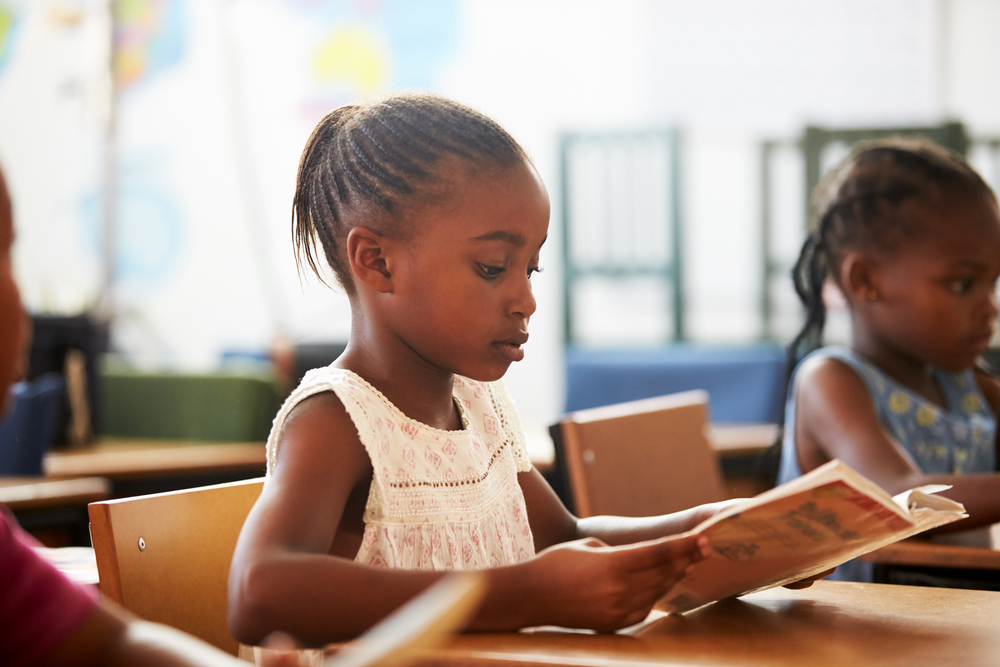
The Reading Recovery program was established in the United States in 1984 to provide one-on-one tutoring to struggling readers in the first grade. The goal of this program is to help these struggling readers understand complex concepts and develop the crucial skills that they need to become better readers.
If your first grader is struggling to keep up with their classmates in reading, it’s important to understand the basics of the Reading Recovery program.
What Does the Reading Recovery Program Entail?
First graders who participate in the Reading Recovery program will work one-on-one with a teacher who is specially trained to help struggling readers. These teachers do not take a “one-size-fits-all” approach to teach reading. Instead, they will create customized lessons based on each child’s unique needs.
Each lesson may consist of a wide variety of activities, including:
- Reading books that are familiar to the student
- Writing stories
- Reading a new book per day
- Re-reading the new book from the previous day’s lesson
- Using magnetic letters to create new words
- Learning more about letters, sounds, and spelling patterns
Each lesson will give students an opportunity to work on many different types of reading skills, including phonemic awareness, decoding, and reading comprehension.
How Long Is A Reading Recovery Lesson?
The students who participate in this program receive 30 minutes of one-on-one instruction with a specially trained teacher every school day.
The program can last anywhere from 12 to 20 weeks. If a student demonstrates that they are capable of meeting reading expectations for their grade level, they will no longer need to participate in the program.
What is the Observation Survey?
The observation survey is a tool that is used throughout Reading Recovery to help teachers assess each student’s skills and progress. This survey is designed to assess six reading skills, including:
- Letter identification: This involves determining which letters the child knows and how they are able to identify them.
- Word test: This is an assessment of the child’s current vocabulary.
- Print concepts: The teacher will assess how much the child understands about the way that words are used and represented in print.
- Writing vocabulary: This is an assessment of how the child is able to incorporate words from their personal vocabulary into their writing.
- Hearing and recording sounds: This is an assessment of the child’s phonemic awareness skills.
- Text reading: The teacher will observe and record how the child performs when reading continuous sections of text.
Every student who participates in the program is assessed before they begin, when they complete the program, and at the end of their school year. This helps teachers track each student’s progress throughout the program.

Is Reading Recovery Effective?
The Reading Recovery program has proven to be a very effective way to help first graders overcome their reading and writing difficulties. Approximately three-quarters of the students who complete the 12 to 20-week program are able to meet or exceed their grade-level reading expectations. Research has shown that these students tend to continue to improve upon these skills and perform well on standardized tests in later years.
Research has shown that this program can also reduce four different types of achievement gaps, which are significant differences in academic performances between different groups of students. The Reading Recovery program has been proven to reduce:
- The gap between low-performing and average-performing reading and writing students.
- The gap between higher-income and poverty-level students.
- The gap between minority and non-minority students.
- The gap between non-native and native English speaking students.
There’s no doubt that this program is effective. But unfortunately, some children will not see results with the Reading Recovery program. When this happens, specially trained teachers recommend further classroom support to meet the needs of these students. This ensures that these students continue to get the help they need to improve upon their reading and writing skills even when the Reading Recovery program is over.
How Parents Can Help Struggling Readers—With or Without the Reading Recovery Program
The Reading Recovery program is not available to every struggling reader. But there is another way for kids to get the one-on-one instruction they need to become better readers: the Readability app.
The Readability app uses responsive speech recognition and artificial intelligence technology to interact directly with the reader by correcting their pronunciation mistakes and asking them questions about the text. Download the Readability app today to start your free 7-day trial and connect your child to their very own digital tutor.

 Español
Español